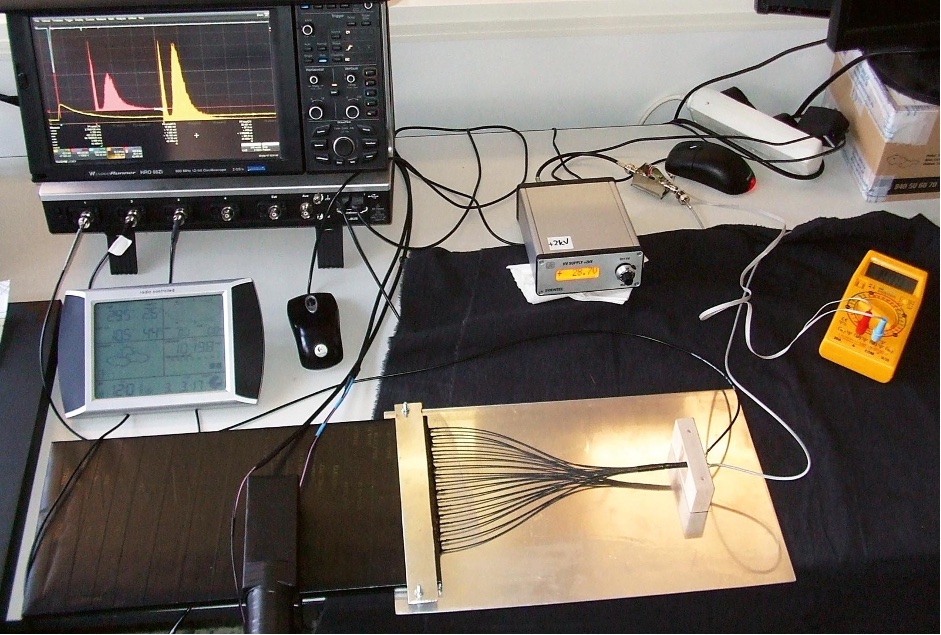Mária Slavíčková: On the hunt for neutrinos
Ak chirality affects the properties of neutrinos and why this relationship is fundamental to our understanding of the universe. A unique experimental device focused on the detection of sterile neutrinos, the existence of which has not yet been proven. In addition, it has significant applications in the field of nuclear safety and monitoring of nuclear facilities, including reactors.
Pasteur's quote captures the basic principle of chirality, a property that manifests itself not only in the macro world, but also at the level of molecules and subatomic particles. We will focus on the fascinating phenomenon of chirality and its relationship to neutrinos – mysterious particles that play a key role in particle physics.
Chirality in physics
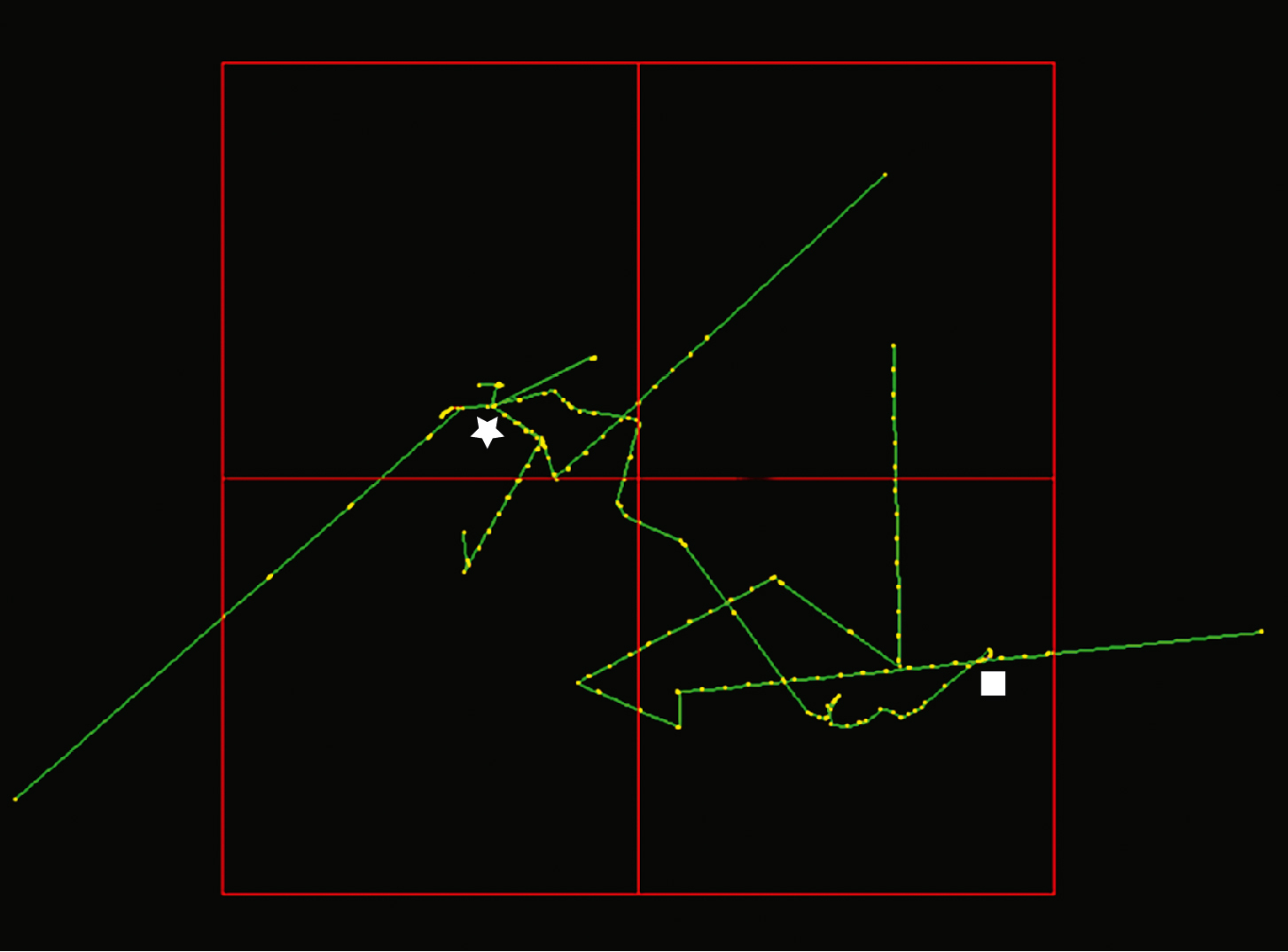
Antineutrino interaction in the S3 detector according to GEANT simulation. The red outline indicates the S3 detector. The square marks the place in the detector where the positron annihilated occurred. The asterisk indicates the place where the neutron was captured, followed by a gamma cascade with a total energy of 8 MeV. Thanks to the high segmentation of the detector, the topology of the event can be precisely determined and then evaluated either as a true neutrino interaction or as an undesirable background. Chirality in physics is a fascinating property that refers to the asymmetry of objects or particles. A chiral object is defined as an object that is not identical to its mirror image, does not have a center or plane of symmetry, but can have a rotational axis of symmetry. The relationship between an object and its image is similar to the relationship between the left and right hands. Imagine that you have two gloves – one for the left hand and the other for the right hand. Although they look similar, they cannot be confused; The left glove never fits on the right hand and vice versa. This phenomenon is called chirality. In particle physics, chirality is a fundamental property of particles and is relativistically invariant, i.e. it does not change regardless of the speed and mass of the particle in each inertial frame of reference. All fermions (particles with half-integer spin) exist in two chirities – left-handed and right-handed. However, neutrinos, mysterious particles that hardly interact with matter, for example, occur only as left-handed neutrinos. Right-handed neutrinos do not exist according to the Standard Model of particle physics, which creates an interesting asymmetry in the universe. Antineutrinos are known only as right-handed ones. The existence of right-handed neutrinos and left-handed antineutrinos is assumed in extended theories of physics, which try to explain some observed phenomena that the Standard Model cannot fully explain. But there is also the possibility that right-handed neutrinos and left-handed antineutrinos simply do not exist. But if they do, it is assumed that their properties would differ significantly from those of the previously known types of neutrinos – they could have a higher mass, be insensitive to weak nuclear force (so-called sterile neutrinos), or even both. This asymmetry isn't just a mathematical curiosity — it has real-world implications for how the universe evolves and works, and it's the key to understanding some of the biggest mysteries of physics.
Mysterious Wanderers in Space
Neutrinos are some of the most mysterious particles in the universe. Although they are all around us, and billions of them pass through our bodies every second, they rarely interact with matter. We are literally surrounded by an invisible ocean of neutrinos. The low strength of the interaction of neutrinos with matter is evidenced by the fact that we would need a layer several light years thick for a single neutrino to penetrate the lead shielding. Neutrinos have no electric charge, which means they do not interact through the electromagnetic forces that govern most of the interactions we know. Neutrinos do not interact through the strong interaction between quarks and gluons, but only through the weak nuclear force and gravity, which is insignificant due to their negligible mass. This property makes neutrino detection extremely difficult, because the probability that a weak force will cause a reaction with matter is much smaller than in the case of a strong or electromagnetic interaction.
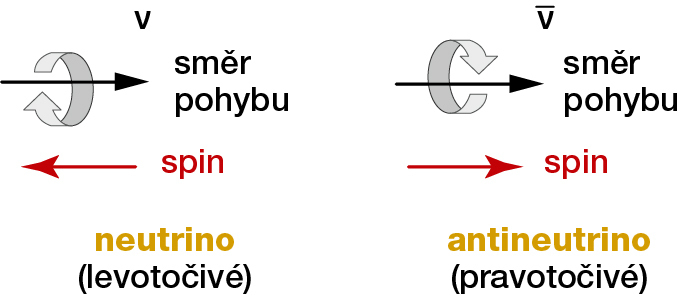
Chirality is closely related to the helicity of the particle. Helicity can be defined as the projection of a particle's spin into the direction of its motion. Unlike chirality, however, helicity is dependent on the relative motion of the observer and the observed particle. For example, if we observe a particle with right-handed helicity and then start moving in the same direction, but faster than this particle, the direction of its motion relative to us is reversed. Yet the projection of the spin in the direction of motion remains the same. This changes the right-handed helicity of the particle to left-handed helicity. Conversely, if we observe a particle with left-handed helicity and move faster than it in the same direction, its helicity changes to right-handed. Chirality is an intrinsic property of a particle that does not depend on the motion of the observer. For massless particles (photons), helicity is identical to chirality. There are currently three types or "smells" of neutrinos – electron neutrino, muon neutrino and tau neutrino and their respective antiparticles. There is one very interesting phenomenon associated with neutrinos, called neutrino oscillation (see Vesmír 85, 33, 2006/1). Oscillation refers to the transformation of one type of neutrino into another type, i.e. for example, a neutrino that is produced as an electron neutrino can be detected at a certain distance from the source as a muon neutrino. This phenomenon was first indicated by the observed discrepancy in the number of electron neutrinos coming from the Sun (see also Vesmír 82, 102, 2003/2), known as the solar neutrino anomaly. Experiments such as the Homestake experiment led by Raymond Davis Jr. have detected only about a third of the number of electron neutrinos predicted by theories based on models of thermonuclear reactions in the Sun's core. This discrepancy has led scientists to hypothesize that neutrinos may oscillate between different scents as they travel from the Sun to Earth. Neutrino detectors of the time were sensitive mostly to electron neutrinos, which meant that muon neutrinos and tau neutrinos were not detected. Later experiments, able to detect all three neutrino scents, confirmed this hypothesis and provided convincing evidence of neutrino oscillation. This discovery was a major breakthrough because it showed that neutrinos have a non-zero mass, which contradicted the original assumptions of the Standard Model of particle physics.
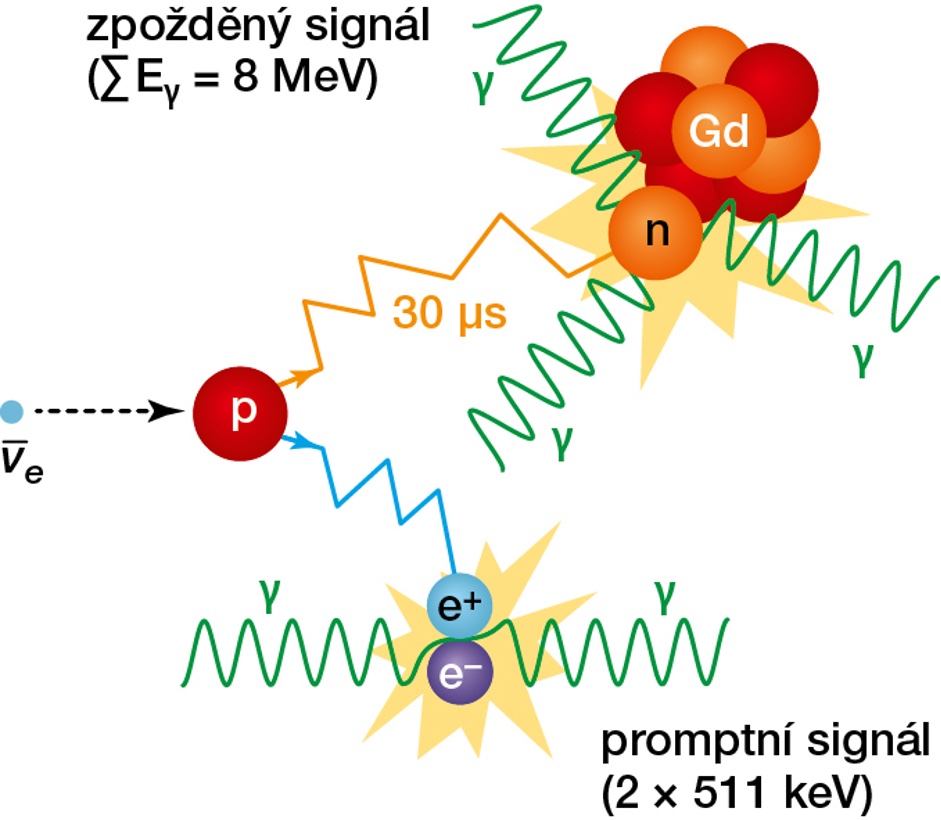
The graph shows the dependence of the oscillation probability on the distance from the source for two types of neutrinos and for the given oscillation parameters. The red curve shows the probability that as the distance from the source increases, electron neutrinos will be converted into muon neutrinos. The blue curve shows the probability of survival, i.e. the probability that electron neutrinos do not oscillate on their way. To add to the mysteries associated with neutrinos, in 2011 a refined Huber-Mueller model was presented, which re-evaluated the predictions of the antineutrino flux from the reactors and showed that the antineutrino flux from the reactor should be approximately 6% higher than the values measured so far. This discrepancy between the expected and actually detected antineutrinos has become known as the reactor antineutrino anomaly, and suggests that electron antineutrinos from the reactor could oscillate to another, as yet undiscovered type of neutrino, the so-called sterile neutrino. This is a hypothetical particle that interacts only by gravity and can oscillate with ordinary neutrinos.
From theory to experiment
There are many important experiments underway around the world to study the properties of these nearly elusive particles that constantly pass through matter. Neutrinos interact with matter – and therefore with detectors – with a very low probability, which means that the detectors must have huge sensitive volumes, and in order to capture at least a few of these particles, they need to be measured for a long time. This need for huge detectors and their long-term operation significantly increase the cost and complexity of the whole experiment.
An alternative approach is to use smaller, more compact detectors located in the immediate vicinity of the neutrino source. A nuclear reactor is one of the most intense controllable neutrino sources, producing only electron antineutrinos. The intensity of the antineutrino flux decreases with the square of the distance from the reactor, which means that the closer the detector is located to the reactor, the higher the probability of the antineutrino interacting with the detector. Therefore, it is advantageous to place the detector as close to the reactor as possible (~m). However, immediate placement next to the reactor is prevented by safety rules in nuclear power plants. Some types of detection materials are also toxic, flammable or corrosive, and their use in the vicinity of the reactor is therefore problematic, which applies, for example, to detectors based on liquid scintillators.
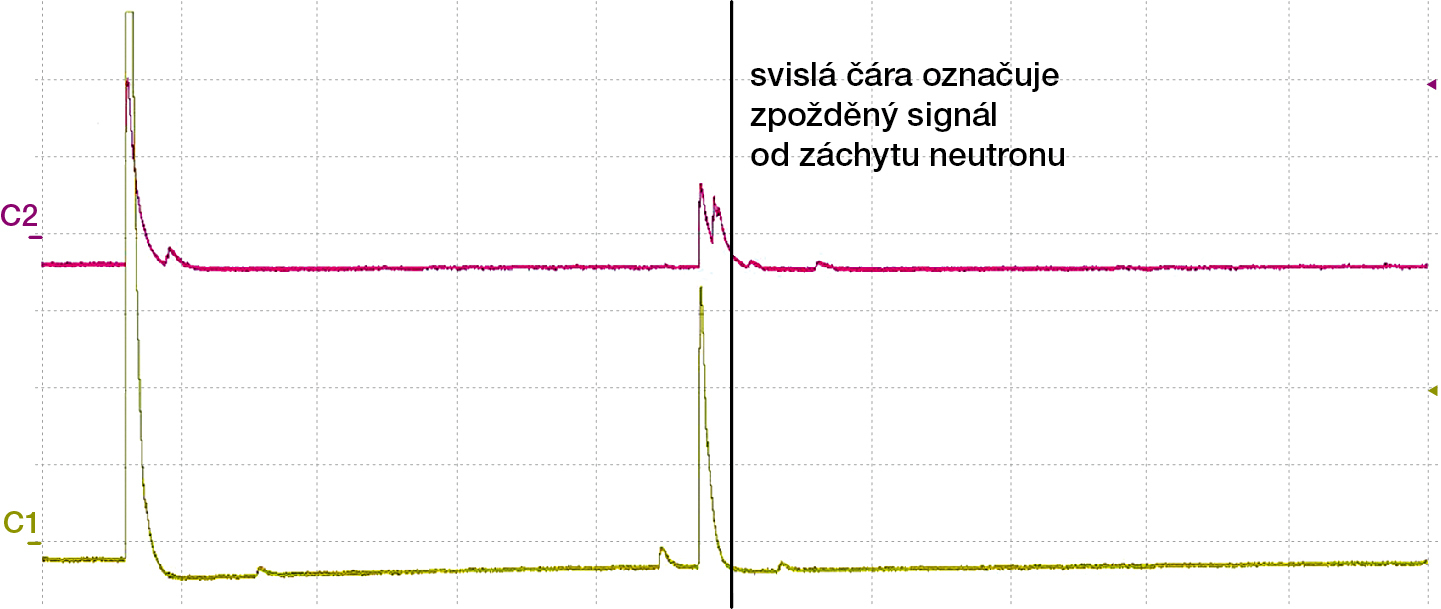
The interaction of the antineutrino in the S3 detector takes place through inverse beta decay (ν̅e̅ + p → n + e+). In this process, the antineutrino from the reactor interacts with a proton in the scintillation material, resulting in positron and neutrons. The positron then annihilates with the electron in the detector, creating two 511 keV gamma quanta that fly in opposite directions at an angle of 180°. The neutron produced in this interaction is gradually slowed down in the detector material in collisions with hydrogen atoms and after 2 to 40 μs it is captured on a gadolinium converter. When the gadolinium nucleus is deexcited, gamma quanta with a total energy of 8 MeV are emitted. The signature of the neutrino interaction in the detector is therefore the detection of a prompt signal from a positron and two gamma quanta with an energy of 511 keV, followed by a signal delayed by 2 to 40 μs from neutron capture. The inverse beta decay therefore has a very specific temporal and geometric signature, which can be accurately recognized in the detector. The first detection of neutrinos was also based on inverse beta decay, and this method is widely used in the identification of neutrino interactions even today due to its efficiency and accuracy. A suitable solution for an antineutrino detector is to use a plastic scintillator based on polystyrene. The S3 detector, which was implemented at the Institute of Experimental and Applied Physics of the Czech Technical University, has a multifunctional use: not only can it verify the hypothesis of the existence of a sterile neutrino, but it is also able to determine the reactor power in real time based only on the number of detected particles.
The main isotopes in the core of a VVER-1000 reactor (such as those in Temelín) are 235U, 238U, 239Pu and 241Pu. Each of these isotopes produces antineutrinos with a unique energy spectrum. This means that by measuring the spectrum of antineutrinos, the isotopic composition of nuclear fuel can be determined. This procedure not only allows for effective monitoring of the degree of fuel burnup, which could lead to fuel savings, but also provides the possibility of detecting the illegal extraction of 239Pu, a key ingredient for the production of nuclear weapons. The detector would also be able to identify hidden nuclear reactors or nuclear explosions, making it an invaluable tool for nuclear material control and global security. Studying neutrinos not only makes it possible to unravel the secrets of the universe, but also provides practical applications that can have a major impact on our security and energy.
Innovation in particle detection
The S3 detector of cube size with an edge of 40 cm, developed at IEAP CTU in Prague, was implemented in cooperation with NUVIA, a. s. It consists of eighty scintillation plates with dimensions of 40 × 20 × 1 cm. The particle that passes through the scintillator leaves energy in it, which the scintillation material converts into a very short light pulse (tens of nanoseconds). The wavelength of light in the scintillator is converted by the light fiber to the wavelength of the greatest sensitivity of the photosensor. At the output of the photosensor there is already an electrical pulse, which is suitable for processing in an analog-to-digital converter after shaping. An eighty-four-channel A/D converter with a sampling frequency of 100 MS/s was designed and constructed at IEAP CTU in Prague specifically for the needs of this experiment.
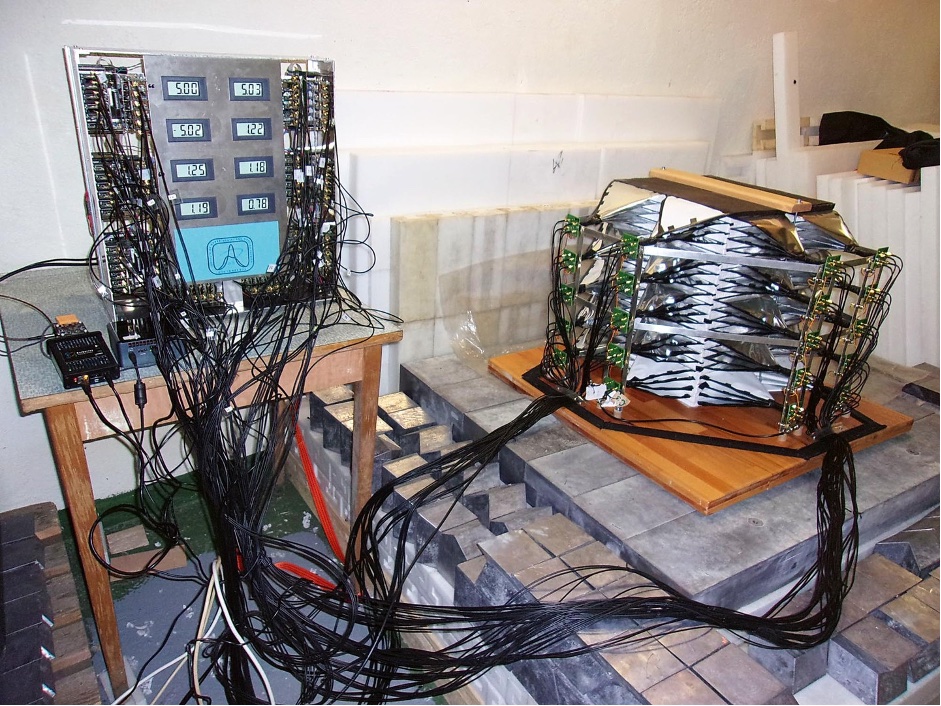
An example of an event that looks like a neutrino interaction in a detector. First comes the prompt signal, which arises from the interaction of the positron in the scintillator, while after about 20 μs comes the delayed signal from the neutron capture. This characteristic time structure of two separate signals is crucial for identifying neutrino interactions using inverse beta decay. As is usual in all particle experiments, we detect a large number of different types of particles, from which it is necessary to select those events that are of interest in the experiment according to specific selection criteria. As I have already mentioned, there are very few reactions in the detector that mean the detection of antineutrinos. In addition, their recognition is made difficult by the statistical fact that in a large number of events we always find some that meet the selection criteria, but in reality are not the events we are looking for. These events form an undesirable background to the experiment, which must be known for a particular detector located under the reactor in order to be statistically subtracted from the results under the reactor. For example, in the case of the S3 detector, up to 11 billion events are recorded during a 24-hour measurement at the maximum energy range, of which, according to theoretical predictions, only about 700 correspond to the detection of antineutrinos from the reactor. It is therefore necessary to find out how many events purely statistically meet the specified selection criteria, under the condition that the detector is not located under the reactor. Therefore, the S3 detector was first tested in a fallout shelter, where at least the number of muons coming from high-energy cosmic rays is reduced. The shielding effect of the cover for muons corresponds to 45 m of water column (similar conditions are in the room under the reactor). However, even this relatively small number helps us greatly to reduce the total number of detected particles.
The S3 reactor detector together with the acquisition system in the fallout shelter in Prague was implemented in cooperation with NUVIA, a. s.
This brings us to another challenging part of the experiment, which is the evaluation of the measured data. The weekly measurement represented about 6.1 TB of binary data. As a result, the statistical background was about 380 events. It follows that when measured under the reactor, the ratio of useful events to the undesirable background (signal:background ratio) will be 1.8. Even this seemingly not very high value is considered very good in particle experiments of this type.
The predecessor of the S3 detector is the DANSS detector, which is currently in operation at the Kalinin Nuclear Power Plant, where it examines neutrino oscillations at short distances (9 to 12 m from the core) and monitors the reactor in real time. The S3 detector is an improved and more compact version and is the only one of its kind in the Czech Republic. This advanced detector is the result of many optimization measurements and tests, including optimization of the chemical composition of the scintillation material, selection of reflective material, selection of a suitable photosensor, development of an efficient data acquisition system, and much more.
There are several nuclear reactors in the Czech Republic that could be counted on to accommodate the detector. However, if we ignore small training reactors, practically only reactors at the Temelín and Dukovany nuclear power plants can be considered. The S3 detector has been developed and constructed in such a way that it does not contain toxic, flammable or corrosive materials. Its other indisputable advantage is that the acquisition system can be located in one of the auxiliary rooms at the reactor, so that the electronics will not be exposed to any high radiation fluxes and only the detector itself will be in the closest proximity to the reactor, whose minimized electronics are highly radiation-resistant.
New horizons of neutrino physics
The invaluable experience we have gained in measuring with the detector leads us to possible modifications of the detector in the future. These will allow us to measure even more precisely and contribute to a deeper understanding of the behavior of neutrinos and their role in the Universe. The S3 detector, although one of the smaller in the family of neutrino experiments, has the potential to be installed under a reactor, which could lead to new discoveries in the field of neutrino physics. The discovery of a sterile neutrino could have far-reaching implications for particle physics and cosmology. Confirming the existence of these hypothetical particles could reform our current understanding of the Standard Model of particle physics. Sterile neutrinos could help shed light on some unsolved questions of cosmology, such as the dark matter of the universe, and could play a key role in understanding the evolution and structure of the universe. Their discovery would also challenge existing theories and could stimulate new experimental and theoretical approaches to understanding the fundamental laws of physics.
Literature
[1] Špavorová (Slavíčková) M. et al.: JINST, 2018; DOI: 10.1088/1748-0221/13/12/C12013.
[2] Slavíčková M. et al.: JINST, 2020; DOI: 10.1088/1748-0221/15/01/C01031.
[3] Burešová H., Fajt L., ..., Špavorová (Slavíčková) M. et al.: Plastic scintillator-based antineutrino detector. PV 2015-360, Czech Republic (2015).
[4] Burešová H., Fajt L., ..., Špavorová (Slavíčková) M. et al.: Antineutrino detector based on plastic scintillator. PV 2015-359, Czech Republic (2015).
[5] Slavíčková M.: Detector of reactor antineutrinos based on polystyrene-based plastic scintillators, Ph.D. thesis, FNSPE CTU in Prague.
Written by Mária Slavíčková
November 11, 2024


